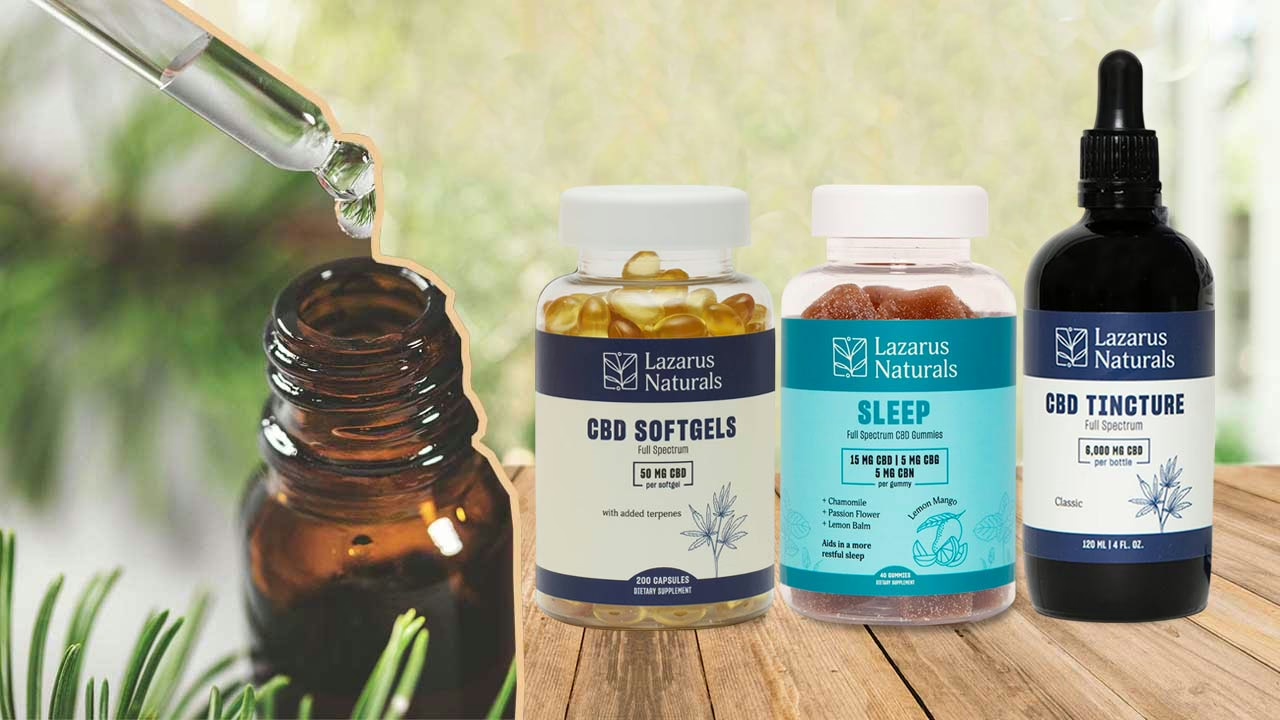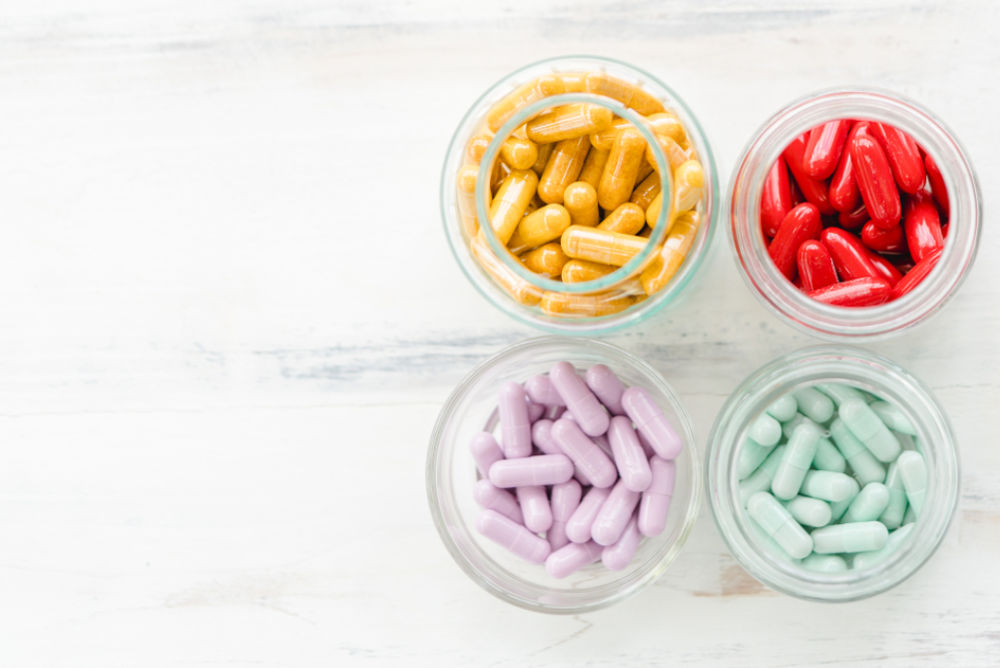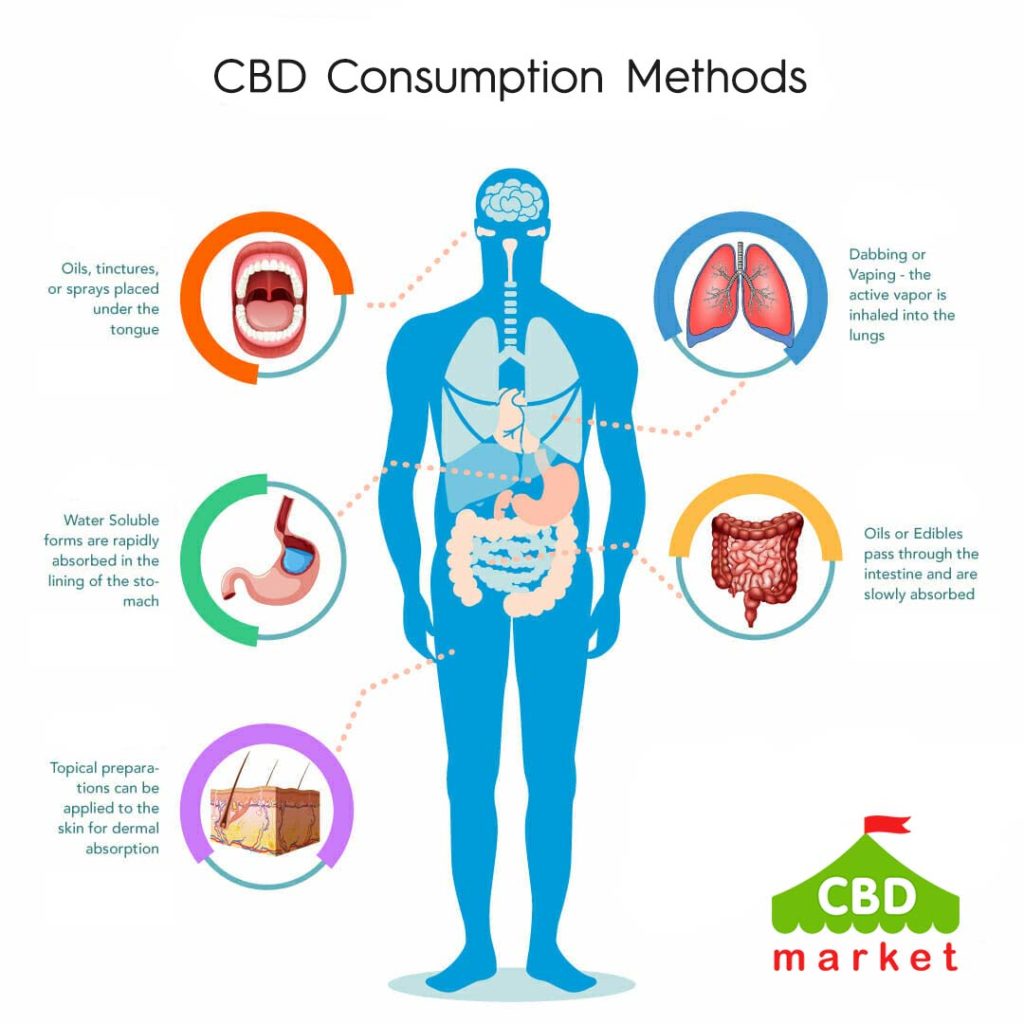Ranking Bioavailability of Different CBD Products
Summarize

Table of contents
What Does Bioavailability Mean?
CBD bioavailability is the percentage amount of the CBD that is absorbed into the bloodstream determined mainly by the product you ingest and how it is administered also known as the process of absorption.
Thus, the potency of the product will also depend on the amount absorbed into the bloodstream or the bioavailability, the higher the amount, the stronger the effects. This is very important when it comes to CBD use since some of the more popular routes have lower bioavailability than other methods of ingestion. In addition, studies have found that women have higher bioavailability compared to men.
Bioavailability and Delivery Methods of CBD Products
Before CBD works, it must first be transferred from the consumption or application point (the route of administration) into your bloodstream and then transported throughout your receptors where it will take its effect on you before gradually being eliminated from your body.
Therefore, the way you take CBD products will govern the distribution, the active amount, the lasting effects, and the process of elimination.
CBD Sublingual Bioavailability
In this method of CBD oil administration, CBD oil drops are placed under the tongue and held there for 30-60 seconds. The CBD oil used sublingually is available as a CBD tincture or CBD spray.
The CBD tincture is made with hemp extracts combined with alcohol, glycerin, or oil, like peppermint oil. The CBD spray is normally made with a CBD tincture and ethanol alcohol. Both forms have a higher availability compared to CBD oil because the CBD is absorbed directly into the sublingual gland when administered under the tongue. From there, the CBD can enter your bloodstream to disperse throughout the body.
This form of administration bypasses the digestive system, meaning the absorption rate is rapid.
- The CBD absorption rate is usually 5-20 minutes
- The CBD absorption amount is 13-19 percent (PMID 12412831)
- There may be a much higher bioavailability based on medical research on the potential use of cannabinoids for the management of chronic diseases (PMID 18728714)
- 2018 medical research found that CBD bioavailability increases when used in a fed-versus-fasting state (PMID 30534073)
CBD Oral Bioavailability
The CBD oral bioavailability is relatively low compared to other forms of administration. The CBD oil absorption is slower due to the fact the CBD must go through the digestive system before absorption into the bloodstream begins.
Further processing takes place in the liver. Your liver contains enzymes that reduce the CBD concentration levels before passing the remains onto the bloodstream. This process reduces bioavailability, thereby limiting the efficiency and effects of oral CBD oil absorption.
This, of course, means it takes longer to feel the effects, and due to the metabolizing process, a lesser amount of CBD reaches the brain to produce the desired effects.
- The CBD absorption rate is normally 30-120 minutes
- The CBD absorption amount is 10-20 percent (PMD 6309462)
- Evaluation of medical research to date found the absolute CBD oral bioavailability could be 6 percent when fasting but may increase fourfold when consumed with a high-fat meal (Springer article; Perucca & Bialer)
The last item could influence the type of CBD edible you choose. Oral CBD ingestion includes consuming a wide range of products like capsules, gummies, food and drink products, and more.

CBD Topical Bioavailability
CBD topical products include items like lotions, creams, gels, and transdermal patches, each infused with CBD. Except for transdermal CBD patches, topical compounds minimally penetrate the upper skin level (stratum corneum) which serves as a moisture barrier and a point of entry for substances applied topically.
The protective top skin layer is made mostly of proteins and lipids or fats which are insoluble in water. However, lipids will dissolve in solvents like alcohol and naturally produced compounds like cholesterol and fatty acids. CBD topicals are made with CBD and other ingredients like olive oil and coconut oil to aid absorption into the skin.
Despite the assisting ingredients, CBD can enter through pores but is not absorbed into lower skin layers. It interacts with the cannabidiol receptors in the upper skin layer, and none of the compounds are absorbed into the bloodstream.
The one exception is the transdermal patch. Transdermal means “across the skin.” The CBD transdermal patch has a concentrated amount of CBD. By wearing the patch, you get a steady supply of a higher quantity of CBD than possible with a CBD topical. The CBD in a transdermal patch penetrates the skin deeper and eventually will reach the blood vessels in the lower skin layers. Once in the bloodstream, the CBD is transported throughout the body.
CBD topicals are good for localized skin treatment. CBD transdermal patches are good for localized skin treatment and widespread CBD distribution. Medical research has found that CBD topicals and CBD transdermal patches have higher bioavailability in terms of the rate of absorption compared to CBD oral options because the metabolic (digestive system) is bypassed. However, both types of topicals work mostly locally, meaning they have shown great promise in helping people deal with localized areas.
- The CBD absorption amount of CBD topicals is unknown but is very low because the CBD penetrates only the top skin layer.
- The CBD absorption rate is high for CBD topicals applied to a particular area, with effects felt within a few minutes when the product is vigorously rubbed into the skin; the rate can be as high as 45 percent.
- Medical research found the transdermal CBD bioavailability rate in terms of steady-state concentration in the blood was attained within 15.5-11.7 hours (PMD 205455522)
CBD Intranasal Bioavailability
CBD intranasal products are inhaled. Using a vape vaporizer or pen, the vaporized CBD is inhaled directly into the lungs. From there it can enter the bloodstream for dispersion throughout the body. Inhaling CBD is an effective administration method for enjoying high bioavailability. One of the reasons is that repeated inhalation delivers a steady dose of CBD to the body.
- Medical research found the bioavailability absorption rate of CBD intranasal administration was 10 minutes (TandFonline).
- Medical research found the bioavailability absorption amount of CBD intranasal administration was 34-46 percent (TandFonline) with one study finding a 56 percent bioavailability (PMID 17712819).
- Bioavailability did not improve with enhancers.
What CBD Products are the Most Effective?
Today, there are numerous CBD products on the market with different consumption methods, such as:
- CBD oils and tinctures (sublingual consumption)
- CBD capsules and pills, CBD edibles, CBD beverages (oral method of consumption)
- CBD vapes (inhalation method)
- CBD topicals (topical and transdermal applications)

However, considering bioavailability, some methods will be delivered faster and have more effects than others. There is really no comparing CBD topical vs oral since topical solutions never enter the bloodstream. Although swallowing CBD products has become very popular in consuming CBD oil, it has been found to have a low bioavailability as the concentrations are reduced by the digestive tract system and enzymes in the liver, as these systems break down molecules before sending them off into the bloodstream.
Transdermal patches and inhalers are shown to have the highest bioavailability, as these methods bypass these systems and go directly into the bloodstream. Smoking or vaping also bypasses these systems and enters the bloodstream through the lungs, and therefore, they too have a high bioavailability.
CBD Bioavailability Chart
| CBD Product Type | Capsules | Gummies | Tinctures and Oils | Drinks | Topicals | Isolate Powder | Suppository |
|---|---|---|---|---|---|---|---|
| Method | Oral | Sublingual, oral | Sublingual, oral | Nano, Sublingual, oral | Topical | Oral / Topical | Rectal / Vaginal |
| Pros | Longer lasting Consistent levels Easy to use | Fast acting Tasty Easy to dose | Fast acting Control Cost-effective | Works fast Tasty | For skin issues No psychoactive effect | Pure CBD (0% THC) Versatile: mix, oral, or sublingual | High absorption Fast effect |
| Cons | Fixed serving | Added sugar Shorter duration | Taste Shorter duration | Shorter duration | Low absorption Can be greasy | Low oral bioavailability Needs precise dosing | Uncomfortable May need help |
| CBD Starting Dose | 10 mg | 10 mg | 5 mg | 10 mg | 20 mg | Pure CBD (0% THC) Versatile: mix, oral, or sublingual | 20 mg |
| Onset | 30–120 min | 1–2 hrs | 10–45 min | 1–15 min | 5–30 min | Oral: 30–90 min Topical: 15–30 min | 10–40 min |
| Duration | 4–12 hrs | 4–12 hrs | 3–8 hrs | 45 min – 2 hrs | 3–8 hrs | Oral: 4–8 hrs Topical: 3–6 hrs | 4–8 hrs |
| CBD Bioavailability | 10–20 % (Oral) | 10–20 % (Oral) | 13–19 % (Sublingual) | 13–19 % (Sublingual) | 2–45 % (Topical) | Oral: 10–20 % Sublingual: 13–19 % | 25–50 % |
How to Increase CBD Bioavailability?
There are a few ways to increase CBD bioavailability.
- First, CBD bioavailability can be increased by using CBD sublingual methods. Sublingual methods are where you place CBD right under your tongue, administering it directly into the sublingual gland. Sublingual products include tinctures, sprays, lozenges, oils, and more. This method affects your body more quickly and efficiently.
- Another way to increase bioavailability is by ensuring you are consuming high-quality CBD products, as bioavailability rises with the quality of the product.
- The University of Nottingham conducted a study and found that combining CBD with long-chain triglycerides, equivalent to a meal that’s high in fats, can increase CBD bioavailability. The fats will act as binding agents, and the CBD will attach to them so that when the fats are metabolized for energy, the CBD will be too and then available for immediate use. Ingesting fats with CBD can increase bioavailability by four times.
Which Foods Can Help Increase the Bioavailability of CBD?
- Coconut oil
- Soybean oil
- Olive oil
- Sesame oil
- Nuts
- Fish
- Meat
- Avocado
- Eggs
Besides, there are CBD potentiators – substances that help our bodies to maximize the effects of CBD. As a result, the impact we get from a dosage of CBD can be stronger.
Final Thoughts
Using CBD has many valuable benefits associated with it. However, you want to ensure you are getting the most effects out of your CBD products.
Bioavailability is the percentage of CBD in your bloodstream that can actually be used, and some methods of use can decrease the bioavailability of CBD substantially causing it to have very little effects.
Swallowing CBD is one example, as with this method the CBD has to pass through the liver and intestinal tracts that break down substances before passing it to the blood. However, taking sublingual CBD is a method that goes through the glands directly to the blood and can raise the bioavailability percentage. You can also eat foods that are high in fats as CBD will get broken down for energy along with fats and will be available for immediate use.
Sources
- https://www.ncbi.nlm.nih.gov/pmc/articles/PMC5674070/
- https://pubmed.ncbi.nlm.nih.gov/12412831/
- https://www.ncbi.nlm.nih.gov/pmc/articles/PMC2503660/
- https://www.ncbi.nlm.nih.gov/pmc/articles/PMC6275223/
- https://ijpsr.com/bft-article/transdermal-drug-delivery-system-a-review/?view=fulltext
- https://pubmed.ncbi.nlm.nih.gov/6309462/
- https://link.springer.com/article/10.1007/s40263-020-00741-5
- https://www.ncbi.nlm.nih.gov/pmc/articles/PMC5849435/
- https://www.ncbi.nlm.nih.gov/pmc/articles/PMC4851925/
- https://www.ncbi.nlm.nih.gov/pmc/articles/PMC6222489/
- https://ww.tandfonline.com/doi/full/10.3109/03639041003657295
- https://www.ncbi.nlm.nih.gov/pmc/articles/PMC2689518/
Share this post


William Rose
Thank you for this informative post. I’ll definitely use the info on bioavailability when choosing CBD for my **** releif.
Scott Cooley
I’ve been taking CBD sublingually since the dawn of time. It gets into your blood immediately and doesn’t get damaged by your stomach acids.